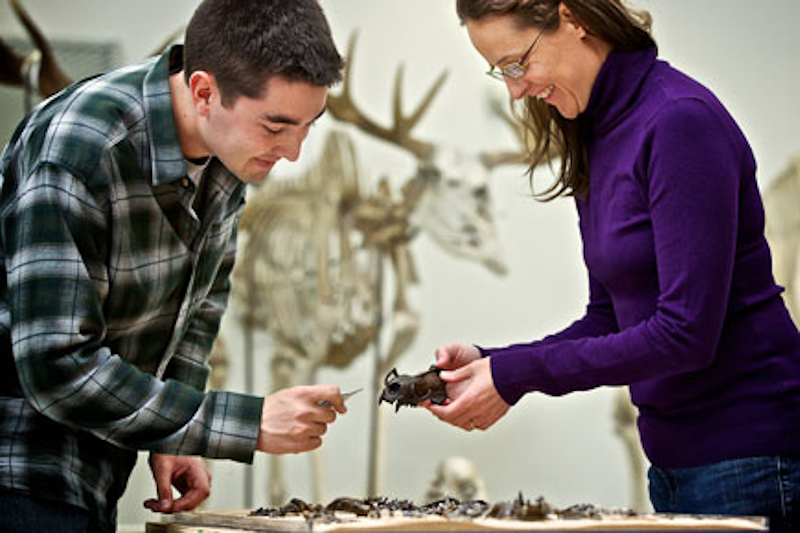Recent Carleton graduate Thomas Cullen made a name for himself in the science community with a groundbreaking discovery about an ancient seal that “turns around” our understanding of seal evolution.
Cullen, 25, has discovered evidence of sexual dimorphism—physical differences in anatomy between males and females, typically involving size and shape—far earlier than the trait was previously thought to exist in seals.
“A lot of seals today have sexual dimorphism, so it’s not out of the question that a seal fossil would show it,” Cullen said. “What was really surprising was that this particular fossil species [is] very much at the base, the beginning, of the seal group.”
Developing his master’s thesis, Cullen was working with a 20-million-year-old fossil of an ancient seal species—enaliarctos emlongi—thought to be a juvenile because it was much smaller than adult specimens.
But he discovered the specimen was actually a very small adult, and explaining the discrepancy became his thesis project.
“It’s a great feeling,” Cullen said. “You have a mystery on your hands and you want to solve it.”
He said the discovery has some important implications.
First, it shows the species likely exhibited harem behaviour, which is organized mating, that is linked to dimorphism and common in seals today, but which scientists previously thought developed more recently.
Second, it hints at why sexual dimorphism developed in seals in the first place.
The changing climates forcing seals together in nutrient-rich areas of the ocean put evolutionary pressure on them to compete, making males larger.
Cullen said the project arose because he wanted to boost what he felt was his insufficient grasp of biology to do his PhD in paleontology, which he is now pursuing at the University of Toronto.
Cullen said reception for the project has been positive.
“No one has found any damning flaws with our research yet,” he said. “So that’s good.”






